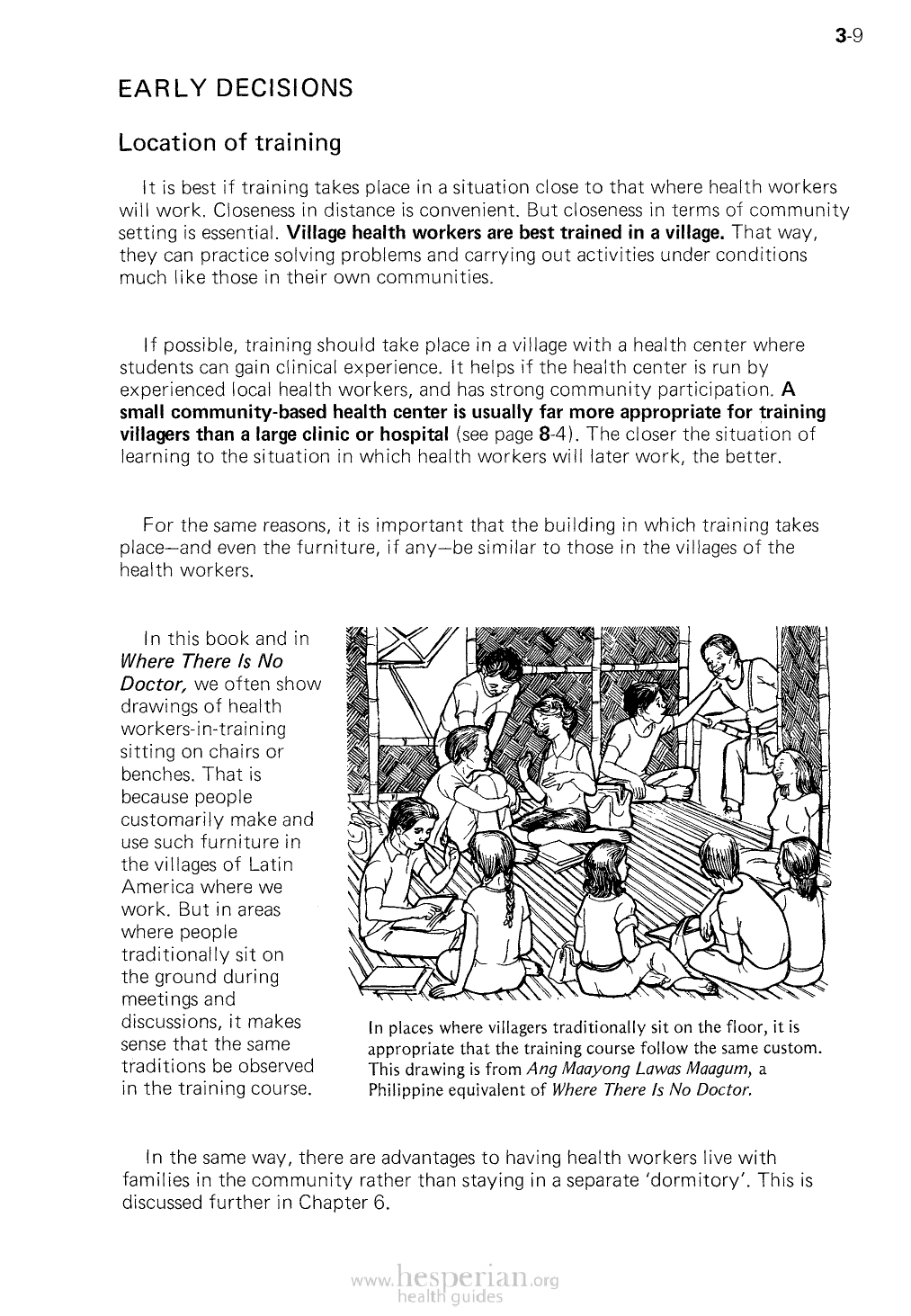
3-9
EARLY DECISIONS
Location of training
It is best if training takes place in a situation close to that where health workers
will work. Closeness in distance is convenient. But closeness in terms of community
setting is essential. Village health workers are best trained in a village. That way,
they can practice solving problems and carrying out activities under conditions much
like those in their own communities.
If possible, training should take place in a village with a health center where
students can gain clinical experience. It helps if the health center is run by
experienced local health workers, and has strong community participation. A small
community-based health center is usually far more appropriate for training
villagers than a large clinic or hospital (see page 8-4). The closer the situation of
learning to the situation in which health workers will later work, the better.
For the same reasons, it is important that the building in which training takes
place-and even the furniture, if any-be similar to those in the villages of the
health workers.
In this book and in
Where There Is No
Doctor, we often show
drawings of health
workers-in-training
sitting on chairs
or benches. That
is because people
customarily make and
use such furniture
in the villages of
Latin America where
we work. But in
areas where people
traditionally sit on the
ground during meetings
and discussions, it
makes sense that the
same traditions be
observed in the training
course.
In places where villagers traditionally sit on the floor, it is
appropriate that the training course follow the same custom.
This drawing is from Ang Maayong Lawas Maagum, a
Philippine equivalent of Where There Is No Doctor.
In the same way, there are advantages to having health workers live with families
in the community rather than staying in a separate ‘dormitory’. This is discussed
further in Chapter 6.